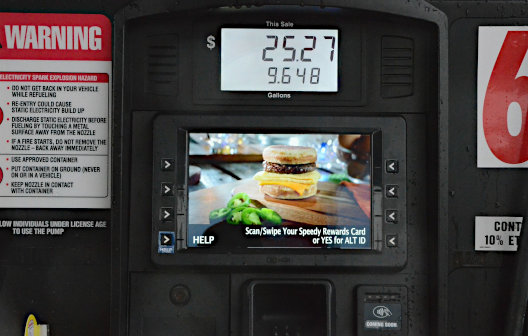Image Credit: Autorentals.com (Flickr)
When Will Investors Know if Inflation is Persistent, Not Transitory?
Is today’s high rate of Inflation transitory or persistent? This is the question the talking heads on TV are telling us we should be asking. It’s important to investors and non-investors alike, so let’s take a look. Some forecasters expect that the past three months of notable increases in CPI are not the start of a long-term trend, but instead, a hiccup that will be short-lived. This camp includes the Federal Reserve Bank Chair, Jerome Powell. Other commenters are reading the tea leaves with much more concern. In their view, a flood of government spending and cheap money for all will continue to pull prices up.
The Consumer Price Inflation (CPI) statistics released last week are only the third data point well above the Fed 2% target. These three consecutive reports neither confirm an inflation spiral or show a slowing of price growth. So, although we know prices have risen, there are no hard conclusions if that will continue. How can we use these and other numbers to make investment decisions, borrowing decisions, and even spending decisions in our daily lives?
The two opposing views are typical when looking at the economic outcome of most unknowns. They’ll say, “on the one hand this, on the other hand, that,” In this case, on the one hand, prices are high because of built-up demand and pandemic-related shortages that will abate, and on the other hand, prices will continue up as there is ongoing cheap money available to spend to fulfill wants and whims. And then discussions also include all the other considerations, the basis months for the inflation is the early stages of the lockdown, people out of work, the bond market hasn’t panicked, etc. Seeing into the future with so many economic variables is rarely clear. And when there is a level of certainty, markets move fast to gobble up opportunity.
What We Did Learn Last Week
As reported Thursday, on a monthly basis, prices rose by 0.9% for the biggest single-month increase since June 2008. The core data (stripping out volatile items such as food and energy) reported US inflation grew from 3.8% over the previous 12 months in May to 4.5% running 12 months in June.
This third dramatic and higher increase provides a reason to lean toward betting on persistent inflation. Even when pulling out some of the more volatile items, consumer prices still soared last month. This challenges the view of most Fed members and others that high inflation during the US recovery will be temporary; so far, for a full quarter of 2021, they have been wrong.
Inflation had been largely absent for over a decade. A so-called reflation mindset started to blossom earlier this year as economies started to recover from the pandemic and inflation ticked higher. Investors moved cash to various areas to try and capitalize on the expected trend. Reflation investments tend to include assets that benefit from faster economic growth, price pressures or higher yields. Equities tend to benefit while fixed-rate bonds suffer. Specifically, in the stock market, small caps and cyclical sectors such as banks and energy producers are where investors look to gain more exposure. This year it also includes cruise operators, airlines, rental car places, and other “reopening” trades.
The enthusiasm for the “reflation trade” is not as popular as it was in late Spring. Some data supports those making a case that the reopening trade contributed to inflation in an unsustainable way. Lumber and other building product prices have since come down quite a bit from their highs, and home improvement sales are slumping. One-third of the price increases in June were from previously owned car price increases (10.5% increase over the previous month). Surely used car price increases won’t continue after the semiconductor shortage sorts itself out.
The Federal Reserve is officially in the transitory camp. Its stance is that as pent-up demand is fulfilled, global supply shortages ease and demand scales back. Inflation, they expect, will then fall back into their target range. This stance by itself helps keep the bond market from a strong reaction to the inflation reports. The bond market is forward-looking, with inflation expectations as its primary driver.
What to Look For
Starting every day knowing that we are not smarter than the overall market is a prudent mindset. It helps us keep our “bets” in check while we lean toward and overweight in one direction or another rather than go in deep and run the risk of being wrong. If inflation continues well above 2% annualized and the economy shows signs of shrinking, it would be taken as a problem sign for the “transitory” camp. Additionally, if the supply shortages and pent-up demand wane and prices continue to escalate, the transitory argument will fall apart completely. Conversely, if economic numbers come in strong and the inflation pace slows, the “persistent” argument begins to fall apart. This would be good news for investors. Last week the Commerce Department reported retail sales were up 0.6% for June. This was above expectations and well above the 1.7% decline in May. This strong economic number gives a little more rope to both the persistent and the transitory arguments in this forecasting “tug-of-war.”
Suggested Reading:
 CPI Confirms Inflation Running Ahead of Interest Rates
|
 Inflations Impact on Stocks
|
 Sports and Esports M&A in High Gear
|
 The New Space Race
|
Sources:
https://www.census.gov/retail/index.html
Stay up to date. Follow us:

|

